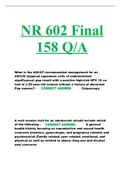Summary
Summary Government and Behavior
- Course
- Institution
A complete summary of all the articles for the course Government and Behavior (year ). It contains all relevant theories, concepts and examples from the read literature. This elaborate summary can help you prepare for the exam.
[Show more]





